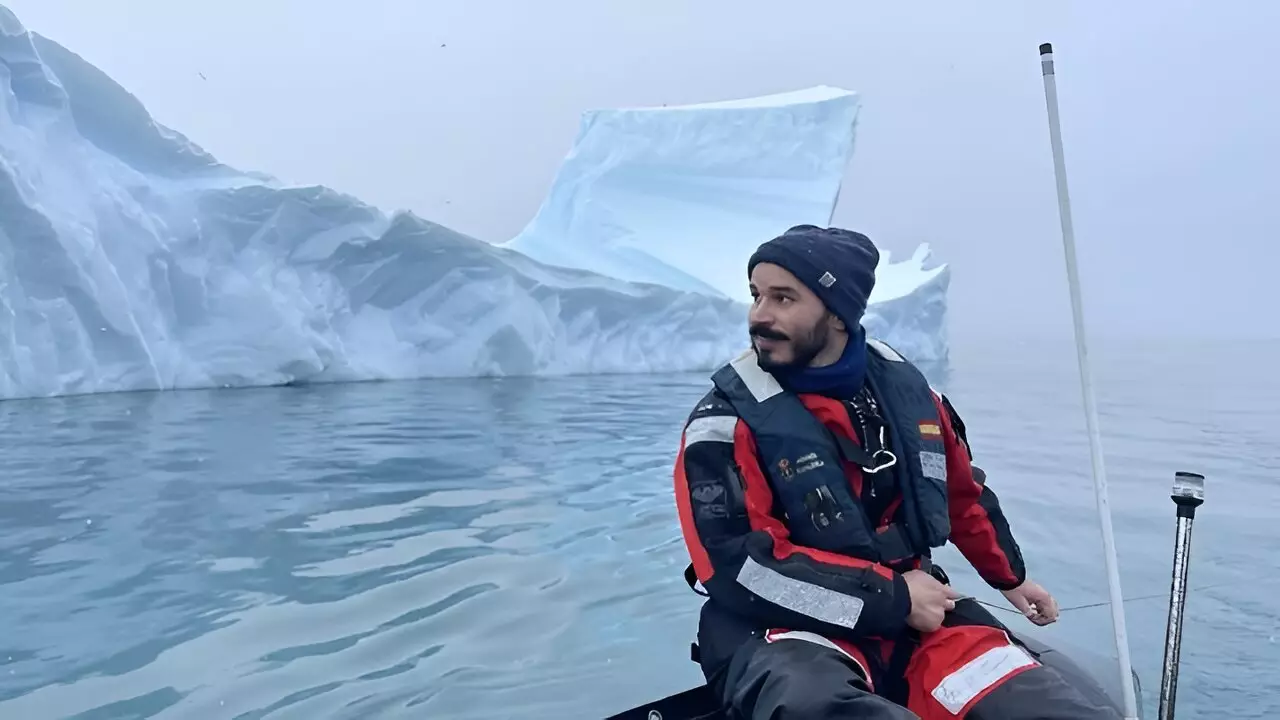

The origins of the Antarctic ice sheet have long been attributed to the formation of the Circumpolar Current around 34 million years ago. However, a groundbreaking study led by the University of Barcelona, the Instituto Andaluz de Ciencias de la Tierra (CSIC), and the Imperial College London challenges this long-held belief, revolutionizing our understanding of the formation of the Antarctic ice sheet in the past and its implications for future climate change. Published in the prestigious journal Nature Geoscience, the article presents a new perspective on the Antarctic Circumpolar Current, which is considered the largest marine current on Earth and plays a crucial role in ocean circulation and climate patterns. This paradigm shift calls into question the interactions between the Circumpolar Current and the Antarctic ice and highlights the vulnerability of the frozen supercontinent in the face of climate change.
Traditionally, it was believed that the circulation of the polar current was instrumental in the formation of ice in Antarctica. However, the study reveals that the Antarctic Circumpolar Current actually emerged later than the onset of the Antarctic glaciation. Professor Dimitris Evangelinos, the study’s first author and a member of the Consolidated Research Group on Marine Geosciences, explains, “This discovery implies a change of scientific perspective in the field of Antarctic research on the interaction between the polar current and the Antarctic ice.” This finding suggests that the Circumpolar Current is more sensitive to climate conditions than previously thought, jeopardizing the stability of the Antarctic ice sheet and its role in climate regulation.
The article represents a collaboration between various research teams, including the Laboratory of Paleomagnetism at the UB’s Scientific and Technological Centers (CCiTUB), Geosciences Barcelona (GEO3BCN-CSIC), the University of Granada, the University of Salamanca, and the University of Bordeaux. These leading institutions joined forces to challenge the established notions around the origins and characteristics of the Antarctic Circumpolar Current. With its ability to connect the Atlantic, Polar, and Indic basins of the Southern Ocean, the Circumpolar Current influences the transport of nutrients and energy to lower-latitude regions, making it a significant driver of global ocean dynamics.
One of the crucial effects of the Circumpolar Current is the thermal isolation it generates, shielding Antarctica from the intense impact of global warming experienced in the Arctic region. Professor Isabel Cacho from the UB’s Department of Earth and Ocean Dynamics explains, “In Antarctica, the effects of global warming are not as pronounced due to the thermal isolation created by the Circumpolar Current, which prevents warm waters from reaching the white continent.” This protective effect highlights the vital role that the Circumpolar Current plays in maintaining the stability of the Antarctic ice sheet and mitigating the impacts of climate change.
The traditional hypothesis postulated that the Antarctic Circumpolar Current formed as a result of plate tectonics separating the Antarctic continent from South America, opening the Drake and Tasman Passages in the Southern Ocean. However, this study challenges the conventional understanding, stating that the ice in Antarctica actually preceded the existence of the Circumpolar Current. “The new study proves that this circumpolar current is not what caused the Antarctic glaciation but the consequence of the ice formation,” affirms the lead researcher. This paradigm shift opens up new avenues of exploration in understanding the intricate relationship between the Circumpolar Current and the Antarctic ice sheet.
Understanding the mechanisms at play between the Antarctic Circumpolar Current and the Antarctic ice sheet is of utmost importance for comprehending both current and future ocean dynamics. Furthermore, it offers valuable insights into the historical dynamics of the Southern Ocean. More significantly, this research has far-reaching implications for addressing the challenges of climate change. By deciphering the complex interactions between the Circumpolar Current and the Antarctic ice, scientists can develop more effective strategies to mitigate the impacts of climate change and safeguard the future of our planet.
In the world of pharmaceuticals, innovation often hinges on finding new compounds that can lead…
In the heart of the Amazon basin, drastic climate changes present an alarming reality that…
Air fryers have rapidly surged in popularity, captivating home cooks and culinary enthusiasts alike. When…
In an era where technology and social media reign, the importance of sleep often takes…
In an era where environmental consciousness is paramount, the maritime industry has long been scrutinized…
Radionuclides, often relegated to discussions surrounding nuclear energy and radioactive waste, have far-ranging implications for…
This website uses cookies.